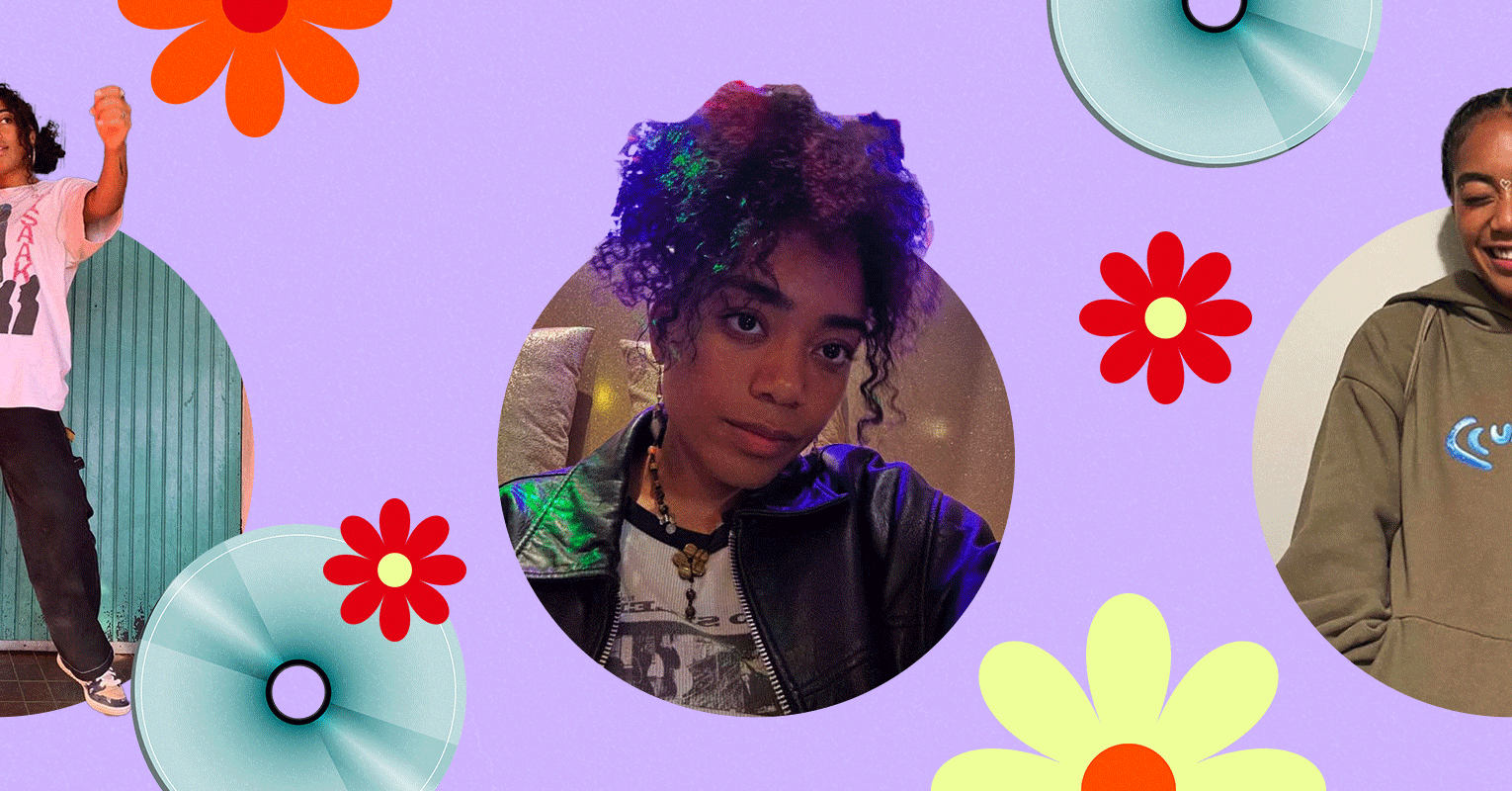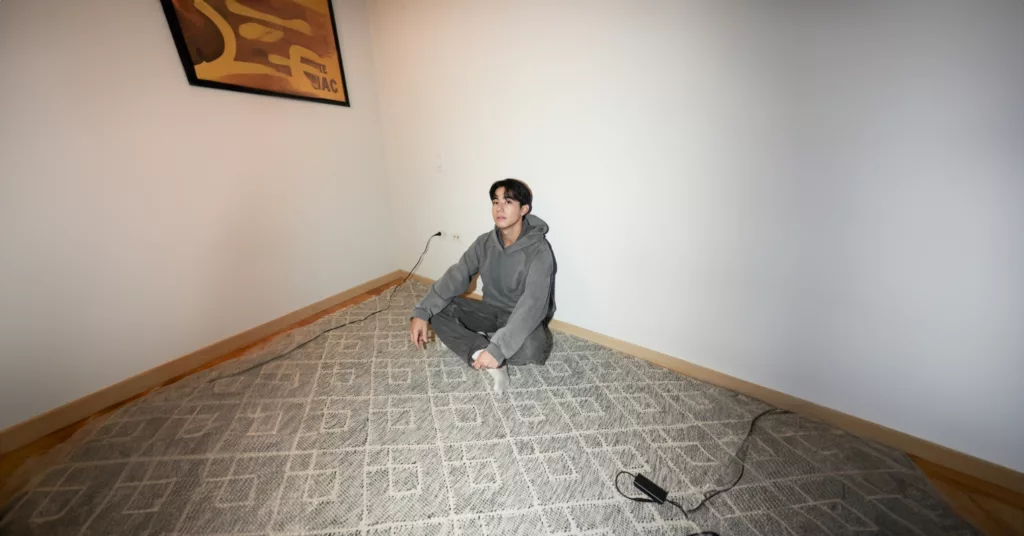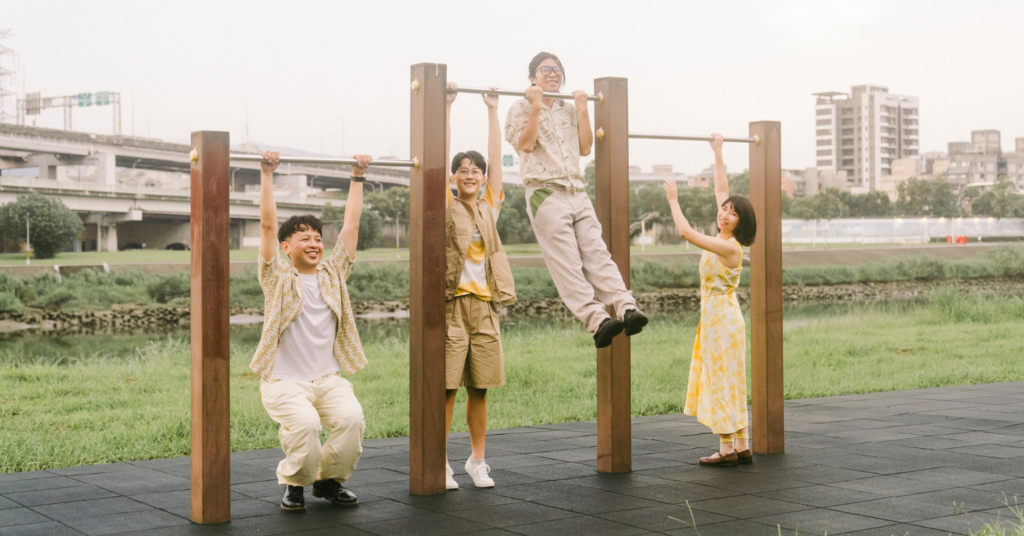Taiwanese Waves Brings Taiwanese Pride to SummerStage NYC

There’s something to be said about listening to live music on a beautiful summer evening. On August 3, SummerStage NYC hosted the Taiwanese Waves concert at Rumsey Playfield in Central Park. Created in 2016, the six editions of Taiwanese Waves have been curated by Mia Min Yen 嚴敏. In this 2025 edition, the event featured classic Taiwanese food at the venue through partnerships with New York City-based Taiwanese restaurants, including 886 and Wen Wen文文.
Tucked in an enclosure surrounded by trees and set against a clear blue sky, the performers shared their art with an enthusiastic crowd. This year’s Taiwanese Waves brought Enno Cheng, ABAO and Nanguaq Girls, and the Bulareyaung Dance Company over to New York City. DJ historian yiuyiu 瑶瑶 of Chinatown Records also kept the energy up at the beginning of the evening.
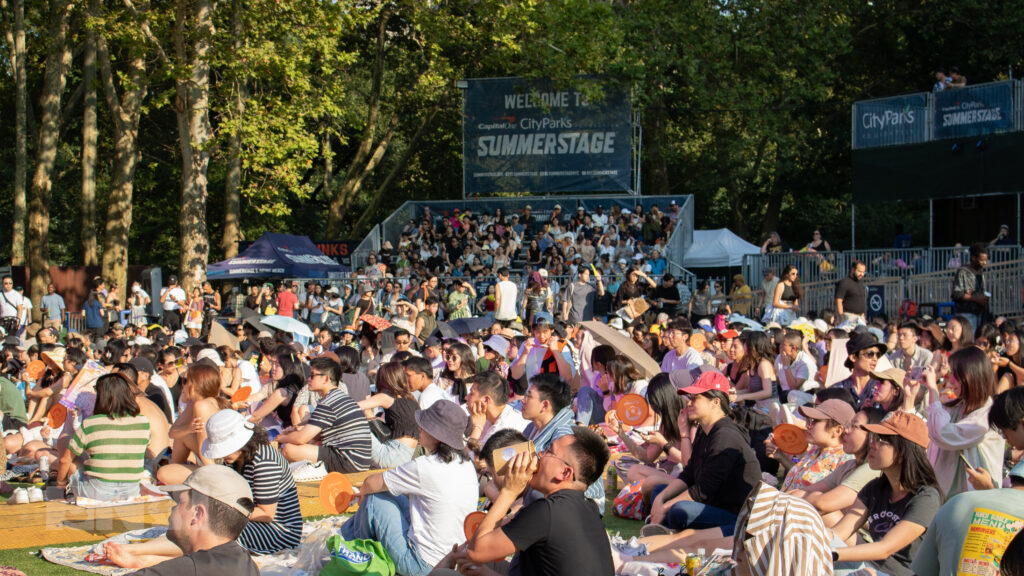
As an island nation, Taiwan relies on the ocean. In this place, the ocean is your anchor. The recent Taiwanese Waves event reflected this by highlighting indigenous Taiwanese artists, cultural traditions, and music. (There are 16 tribes in Taiwan, who are mostly from the east of the country.) As a result, the breeze from that cool summer evening also danced with the Paiwan language, Taiwanese Hokkien, and Mandarin Chinese heard across each set.
Like the event’s host Leo (the creator behind Your Mandarin Guy) noted, “It’s a celebration.” Taiwanese Waves is a celebration of Taiwanese tradition — especially the traditions that are rarely found in the mainstream. ABAO added, sharing with EnVi via email, “Taiwanese Waves is more than just a concert; it’s a celebration of identity, sound, and connection.”
EnVi attended the moving event and recaps the highlights below.
Mics Are Always On
As the sun began its descent in the sky, ABAO, Nanguaq Girls (Kivi, Dremedreman, and Makav) and rapper R.Fu kicked off their set. All indigenous musicians — the former two are of the Paiwan tribe while R.Fu is of the Ami tribe — these artists brought their cultural roots to the forefront. For their Taiwanese Waves performance, they weaved pop and traditional chants together, creating an experience you can’t find anywhere else.
Those who attended the event were spoiled in the best ways. Each artist was given the spotlight to shine with their solo tracks, while the others provided backing vocals and joyful support. There always was something for your eye to catch, like Makav and Kivi dancing together or ABAO showering both sides of the stage with love. The clarity of ABAO, Nanguaq Girls, and R.Fu’s vocals, too, were nothing short of impressive. Whether the artists needed to channel power, gentleness, or another deep well of emotion, they did so with grace and tightly-knit harmonies.
Throughout their 100-minute set, Nanguaq Girls, R.Fu, and ABAO proved their musical range. From gospel music and classic Taiwanese dance songs to a soulful rendition of “Baby” and Paiwan mountain songs, the waves of music crashed down onto listeners — in the best way possible.
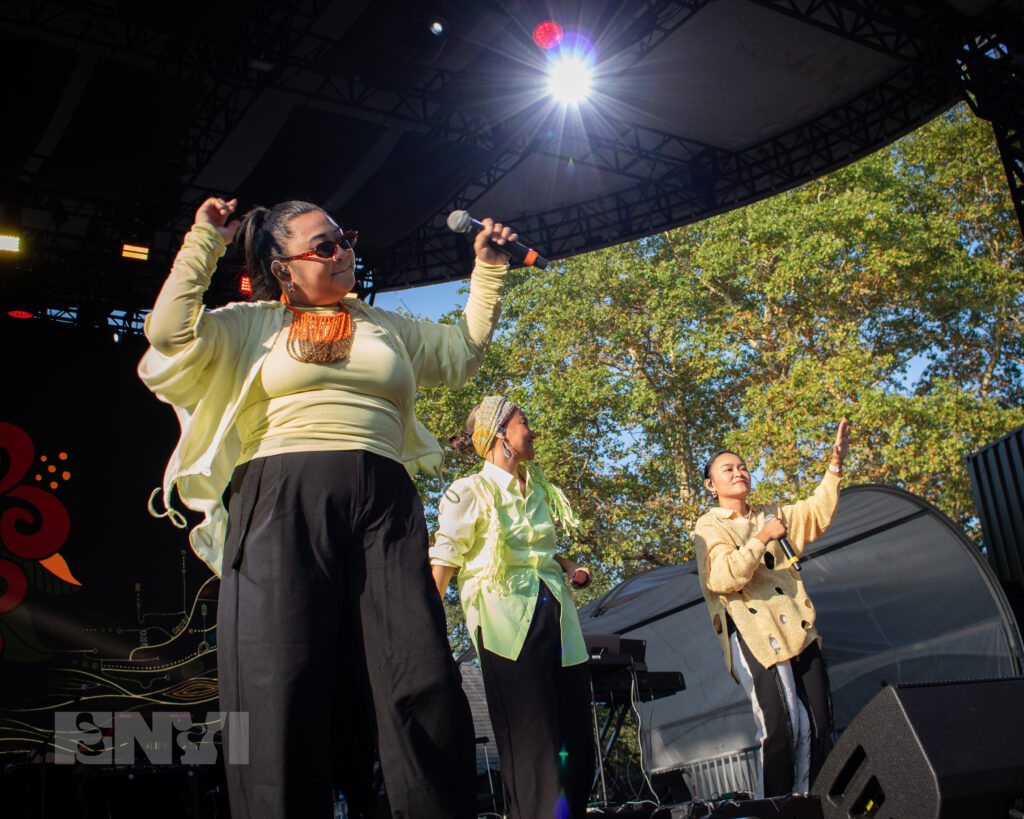
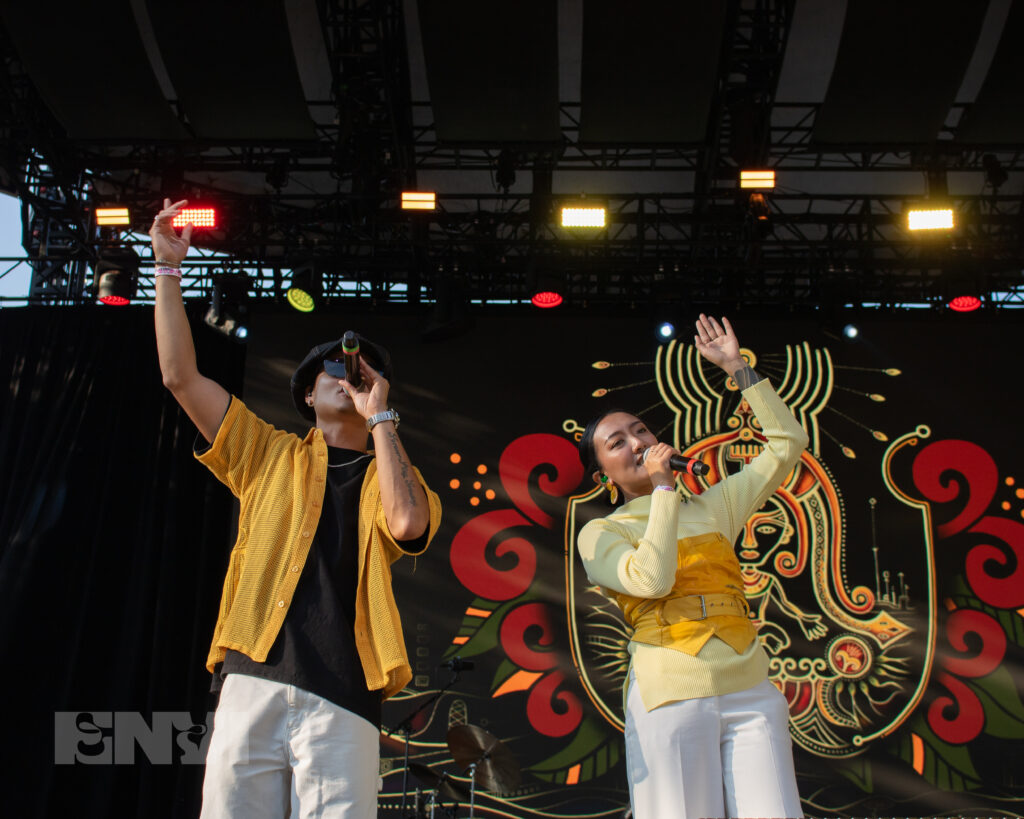
“Born To Be 天生的” closed out their set. Before they jumped into the high-energy of its first notes, Kivi took center stage. Her pure vocals pierced SummerStage listeners’ ears (and probably Central Park walkers outside of the concert area). If you looked around at that moment, you would have witnessed a spiritual moment occuring: those on stage and those in the crowd held their hands up in wonder as they soaked up this earthly magic.
As ABAO noted to EnVi, “I also love seeing how people unfamiliar with our languages or traditions still respond emotionally and physically to the music—that kind of cross-cultural exchange is beautiful.” The musician added, “Through this performance, I hope the local audience in New York can discover more about the culture, traditions, and contemporary music of Taiwan’s Indigenous peoples—our stories, our voices, and the way we carry them into the present.”
This whole experience was elevated because of the Central Park location. There is nothing like soaking up gorgeous live music when the sun sets over a vibrant summer scene. What more could you ask for? I have to agree with my friend who attended Taiwanese Waves with me: ABAO and the Nanguaq Girls’ fit anywhere there is nature. You feel both “grounded and limitless,” like ABAO expressed to EnVi. The golden sunlight reflecting among the trees of the park and the shimmering light peeking in between branches made you forget that skyscrapers were just a five-minute walk away.
That Taiwanese Flair
When the seven members of the Bulareyaung Dance Company marched onto the stage, the crowd knew they were in for a treat. The Bulareyaung dancers were dressed head-to-toe like Taiwanese uncles! Brightly-colored and loudly-patterned shirts announced their presence to even those audience members in the back of the venue. Meanwhile pressed slacks were supported by suspenders that added the final touch to the look.
Bulareyaung Pagarlava, a notable Paiwan choreographer in Taiwan, created the Bulareyaung Dance Company in 2015. Now, there are seven members in the company from Paiwan, Puyuma, Amis, and Dawulong backgrounds: Kwonduwa, aulu tjibulangan, giljigiljaw tjaruzalum, Siyang Sawawan, Kaniw Panay, talai, and Kacaw Panay.
“In our troupe, you truly see each person as they are… We don’t set out to make ‘great’ works. But when we step onto the stage, perform, and sing those songs, we are representing Taiwan, representing Indigenous people,” artistic director and founder Bulareyaung Pagarlava told 500 Times.
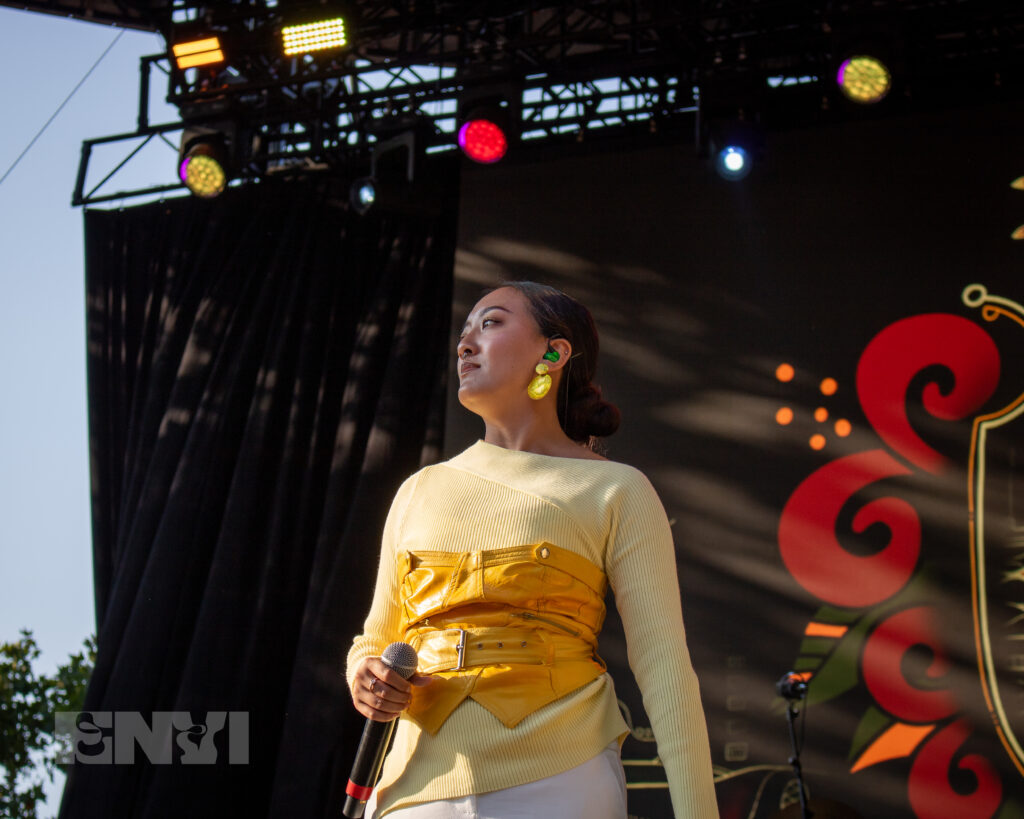

The Bulareyaung Dance Company’s first song re-energized the crowd, all while expanding New York’s definition of “Taiwanese.” A key part of this brought indigenous Taiwanese representation to center stage and rooted itself in connection and community.
For example, ABAO, Nanguaq Girls, and R.Fu did not exit the stage following their main set. Instead, they remained at the corner of the stage, singing along with the dance company and giving Hi-fives when the seven marched by. This lack of separate sets starting and ending definitively created a circular feel to the Taiwanese Waves event. The choice also underscored how everything — and everyone — is connected.
Over the next few songs, the Bulreyaung Dance Company dropped it low, jumped up high, and channeled a Taiwanese flair with every move. A dance circle even formed at one point, with one member showing off his bboying skills and another dropping into a sudden split. As my friend aptly noted, this set was basically Taiwanese Zumba. And the crowd loved it: most people stood, cheered, and waved their hands back and forth to the time of the music.
The most special part was celebrating the different definitions of “Taiwanese.” While I learned about the indigenous tribes my first year living in Taiwan, this sharing and celebrating of culture was nothing like I had ever experienced. From the classic song “家後,” which is sung in Taiwanese Hokkien, to traditional chants sung in Paiwan, an Austronesian language of the Formosan language family found in Taiwan, New Yorkers soaked in even more stories and traditions.
Community Is Everything
Throughout the three-hour event, I kept coming back to one word: community.
Chinatown Records, led by DJ historian yiuyiu established the foundation with a set that brought Taiwanese throwbacks to the forefront. Chinatown Records hosts block parties, oral history workshops, sonic histories, and living room listenings. The “homegrown community effort” also collaborates with the Chinatown community to record and celebrate the unique colors of its music.
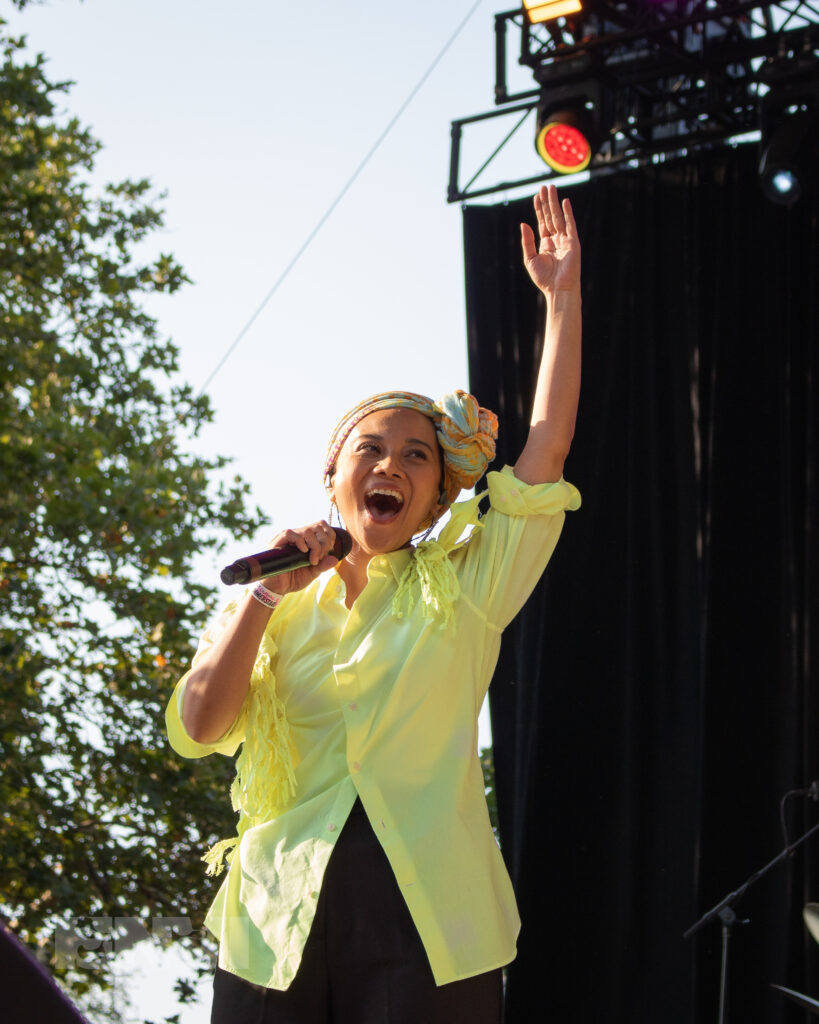
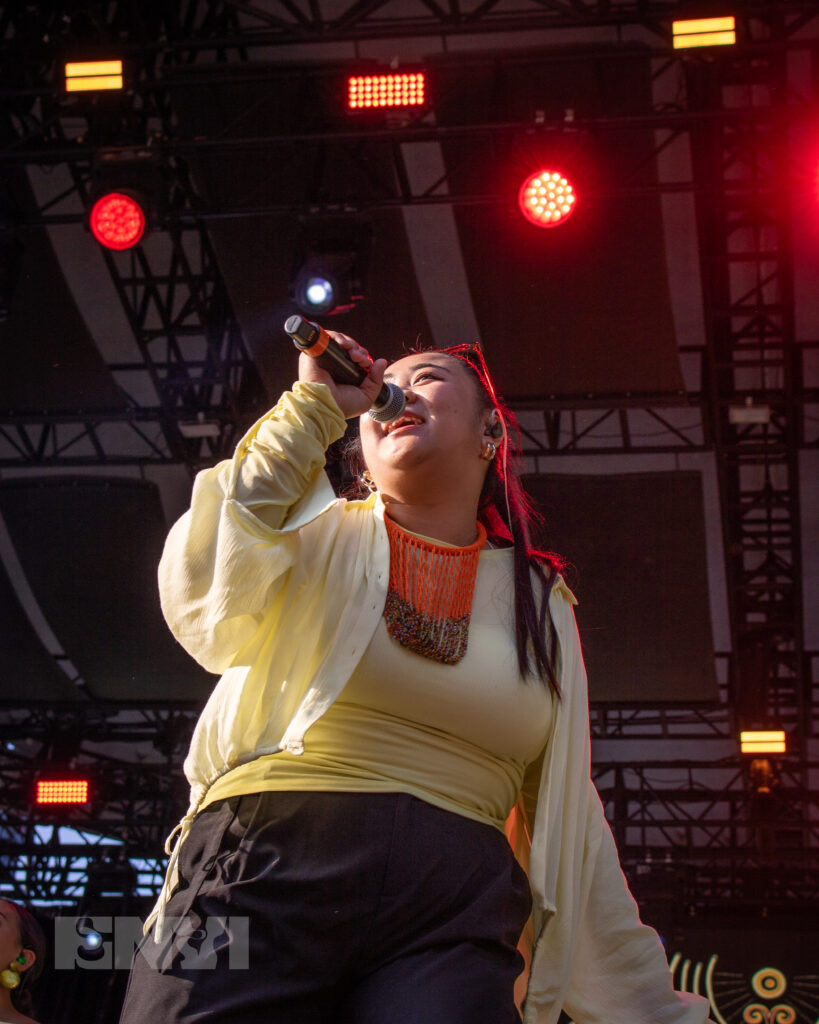
These unique colors only grew more vibrant through the other performers. As mentioned before, ABAO and the Nanguaq Girls did not leave the stage when the Bulreyaung dancers took over the spotlight. Instead there was more dancing, energy, and joy swirling around the space. It was also crystal clear that the 11 artists are good friends with one another. They were consistently in community with each other, whether through singing in harmony or performing ABAO’s track “Thank You.”
This was a kind of connection that cannot be replicated by just anyone. During one of the final songs of their joint set, ABAO, R.Fu, Nanguaq Girls, and the Bulreyaung Dance Company shared a traditional song from their hometown. In this moment, they were yet again united in their movements and resonating notes which carried far beyond the boundaries of Rumsey Playfield.
The artists defined “community” without having to say a word during Taiwanese Waves. And what could be more powerful than being in community when the word feels like it is falling apart?
Enno Cheng’s Shining Storytelling
If the first part of Taiwanese Waves could be compared to golden sunlight, then the final part could be compared to mysterious nighttime.
As the night fell, the round moon made its presence known. At the same time, Enno Cheng made her presence known. In 2023, the Taiwanese artist released her album Moon Phases, which felt like an apt connection to that night’s sky.
A live band accompanied Enno Cheng’s synth-forward set, and acoustic guitar moments changed up the pace here and there. The audience was first introduced to the artist as she danced to the music while in her own world. It was mesmerizing watching her, vibing to her music in a way only she could.
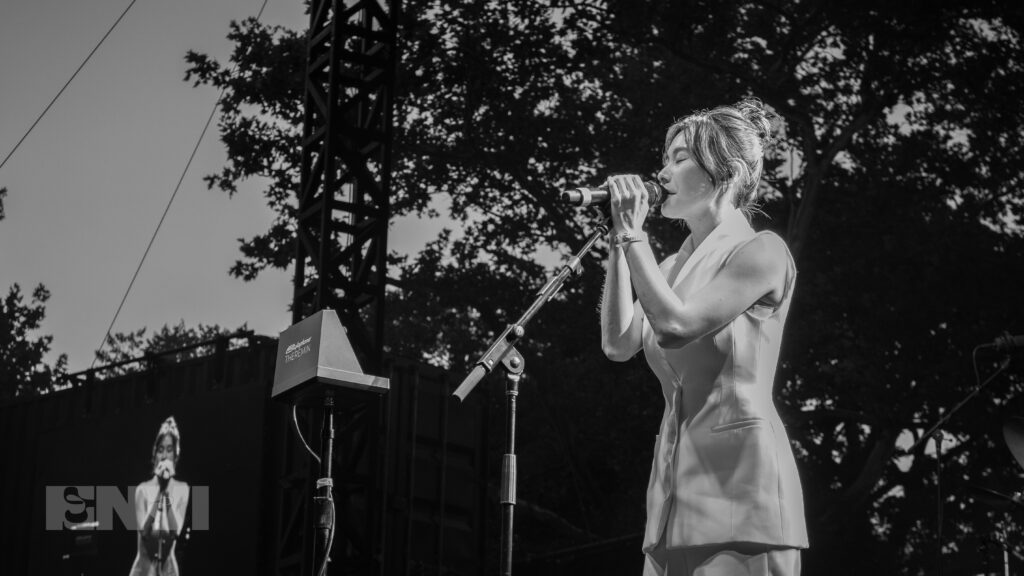
Later into the set, Enno also shared stories behind her songs with the audience. Take “How the Brain Got Language,” for instance. The track tells the story of a boy on the autism spectrum who is fascinated with bird songs. As a songwriter with a deep interest in language, Cheng included translations of her song’s lyrics on a big screen. (Enno Cheng sings in Taiwanese Hokkien and Mandarin Chinese.) She told EnVi via email: “Because lyrics are a very important tool for me – I like words, literature and poetry very much, so I put a lot of effort into lyrics.”
The award-winning Taiwanese artist also underscored, “The [Taiwanese Waves] show itself has become a proof that ‘music can be a bridge between people, and it can take us over all obstacles and beyond the limits of understanding.’”
The closing track, “千千萬萬 (Millions Upon Millions),” ended the event on a high note emphasizing — once again — the power of community. During the second half of the song, the Bulreyaunt Dance Company, R.Fu, Nanguaq Girls, and ABAO all surrounded Enno Cheng on stage. Against the bright backdrop created by the crowd’s camera flashlights waving back and forth, the artists wove Taiwan’s story. They melded together “Ana nade do” sung in Paiwan language with Enno Cheng’s Mandarin lyrics of “千千萬萬的我” (millions upon millions of me).
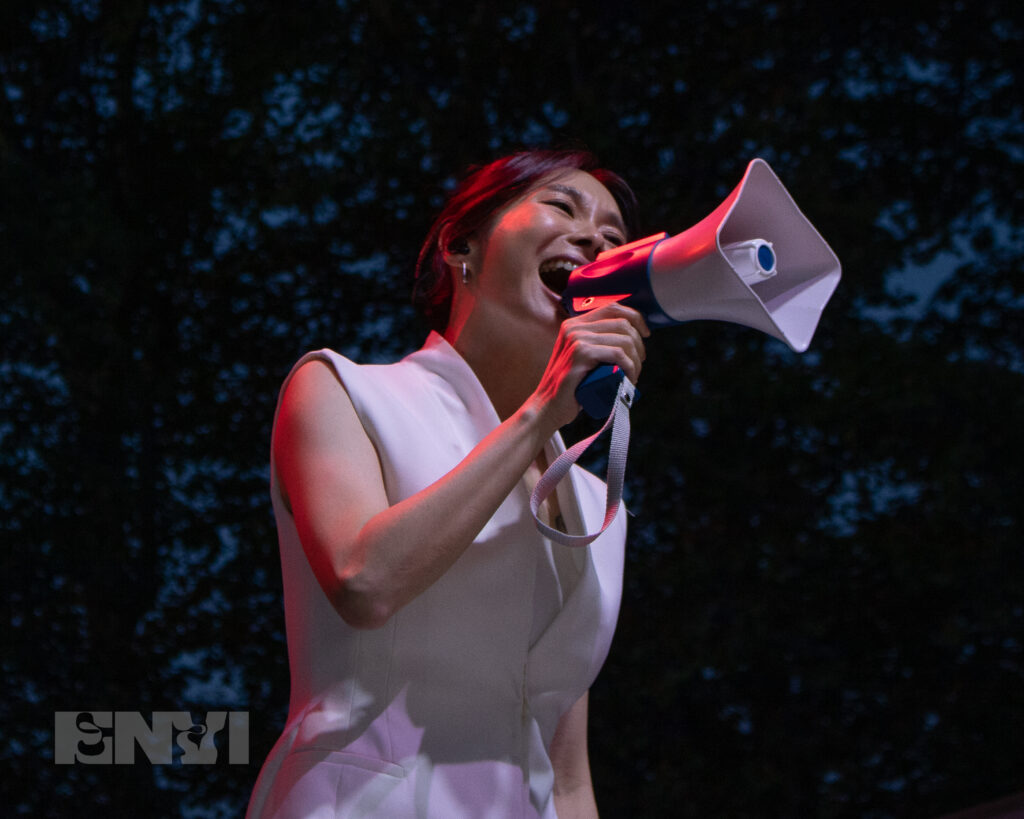
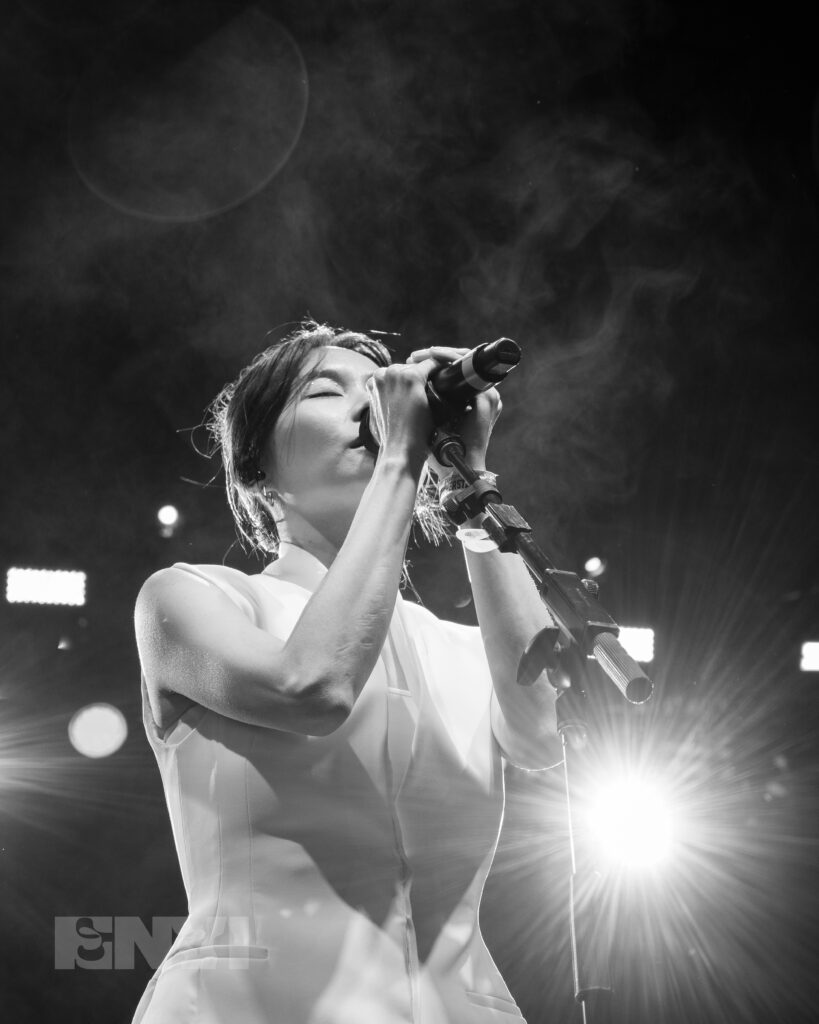
The effect? A celebration, a resistance, a community, and a once-in-a-lifetime recording of history, culture, and tradition.
Enno Cheng put it best in her answer to EnVi’s question “What does sharing your Taiwanese art with the people of New York mean to you?” She noted, “I came to New York with such a sense of responsibility to share what Taiwanese music is, yet I still enjoy music freely based on this premise.” Cheng concluded with one last thought: “Thank you to the New York audience for letting us feel the wonder and cherish our culture and more free flow of emotions.”
Stay updated on everything Taiwanese Waves on Instagram.
Want to relive your favorite concert moments? Check out EnVi’s recap of SB19’s show in LA here!
